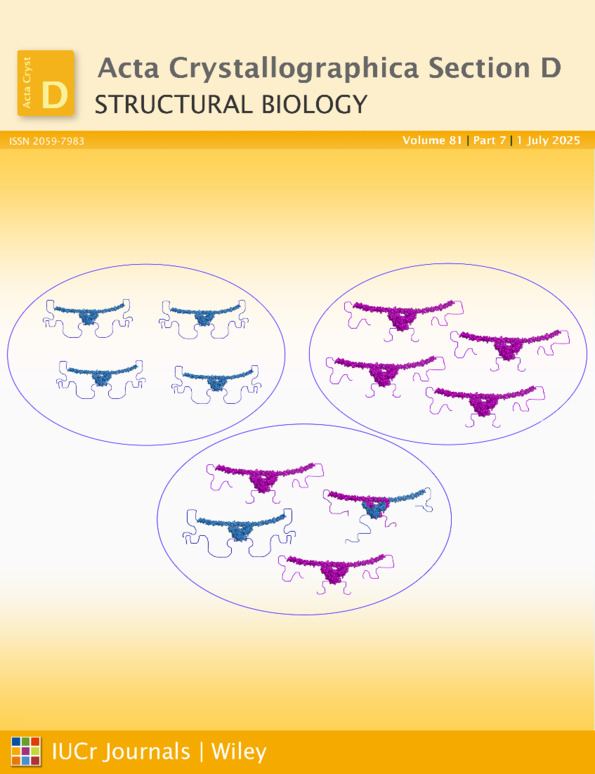Crystallization and preliminary X-ray studies of the Rhizobium meliloti DctD two-component receiver domain
Abstract
The Rhizobium meliloti DctD two-component receiver domain was expressed in Escherichia coli and purified to homogeneity. Crystals were obtained using the hanging-drop vapor-diffusion geometry with ammonium phosphate as the precipitant. The crystals diffract to 2.3 Å and exhibit the symmetry of space group I222 or I212121. The unit-cell dimensions are a = 59.0, b = 58.6 and c = 169.8 Å. The asymmetric unit contains a dimer and the crystals have a Vm of 2.16 Å3 Da−1.




